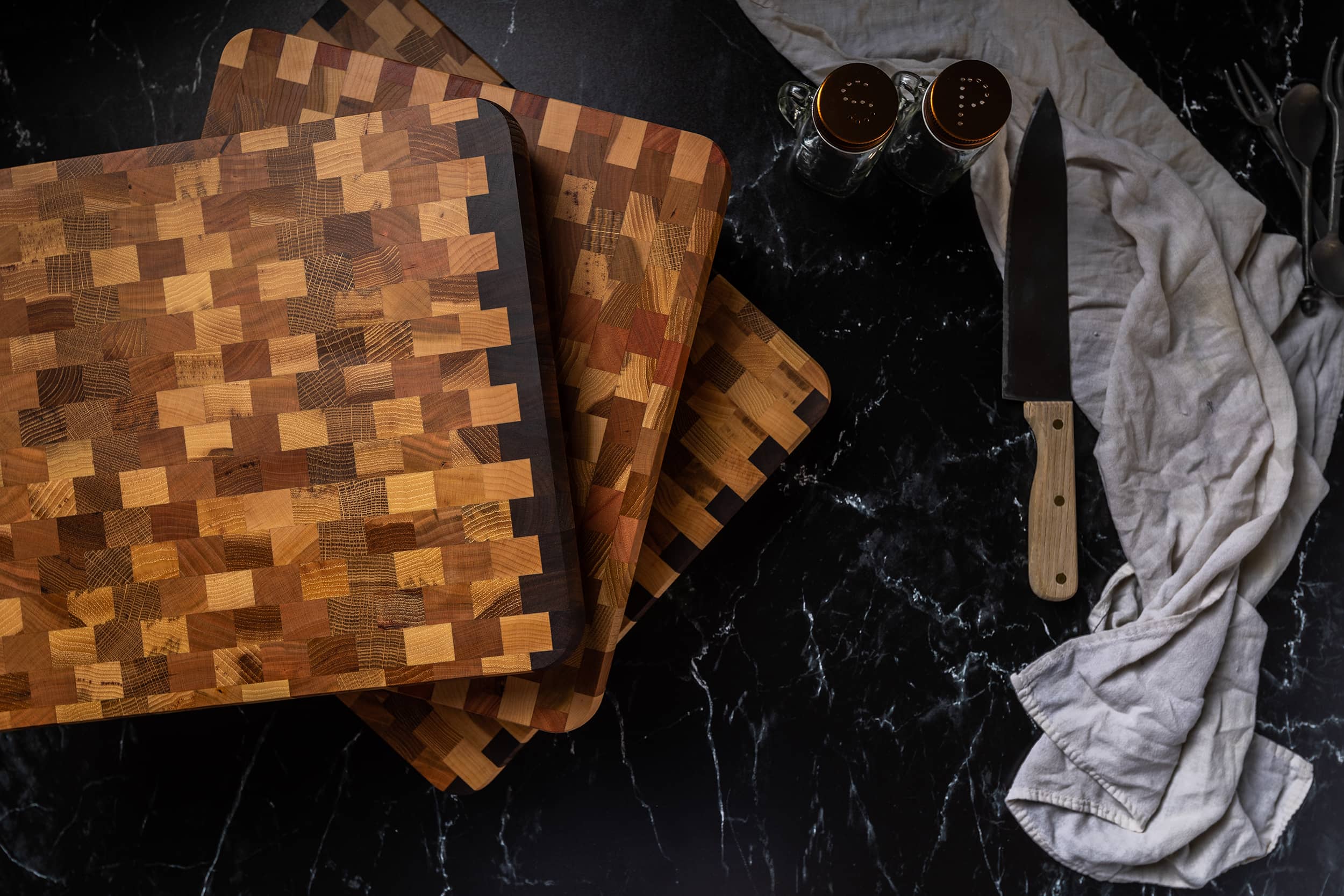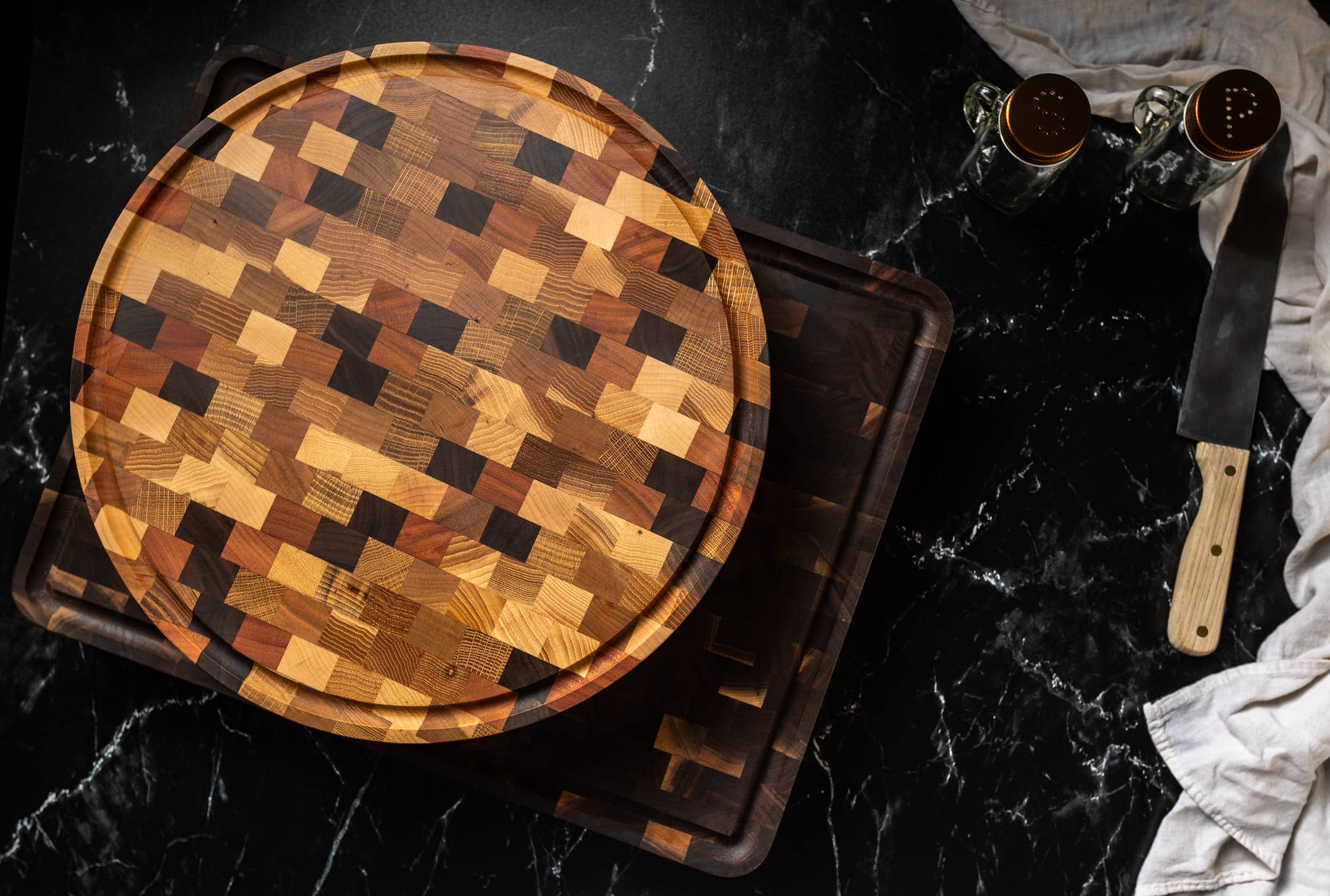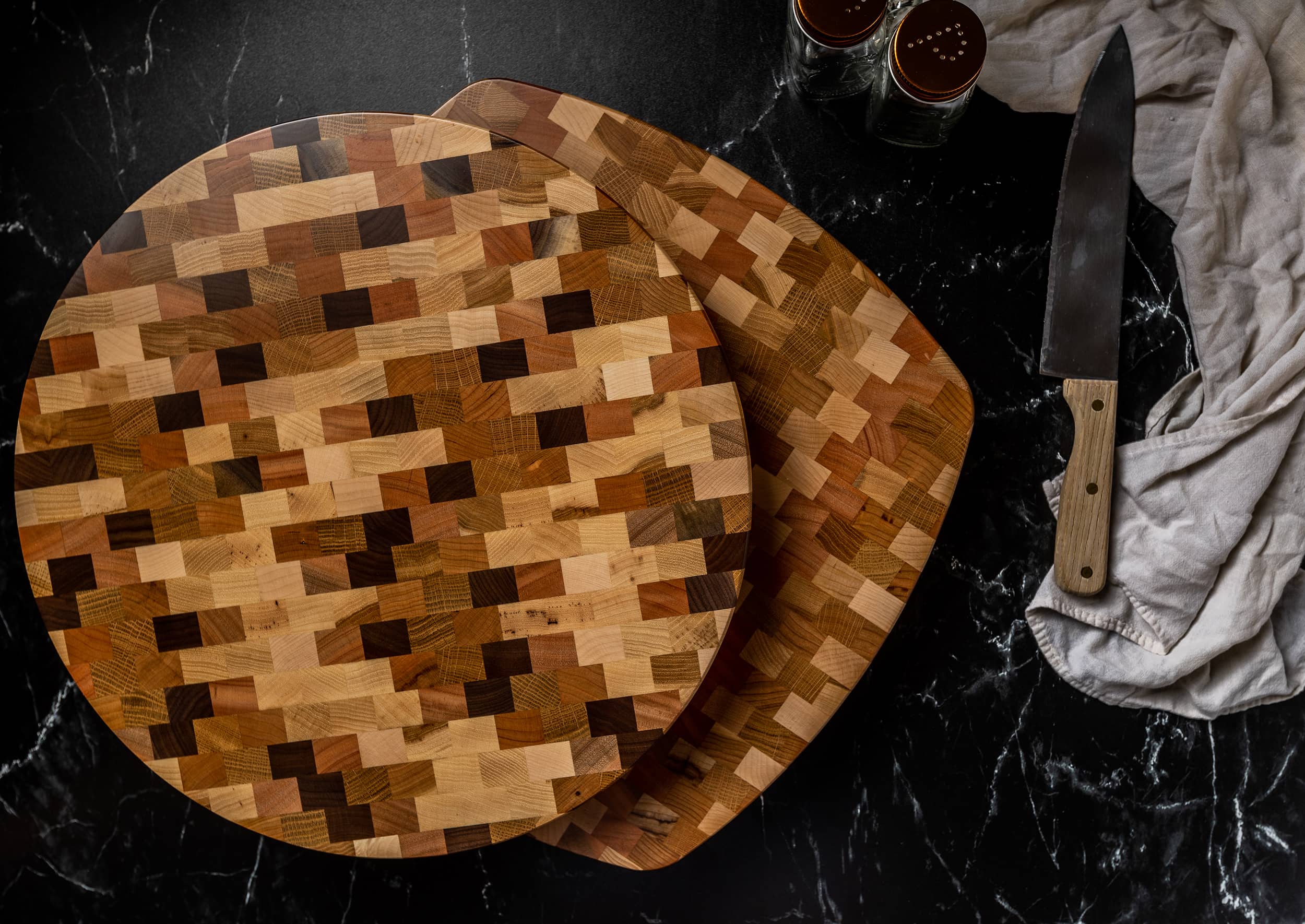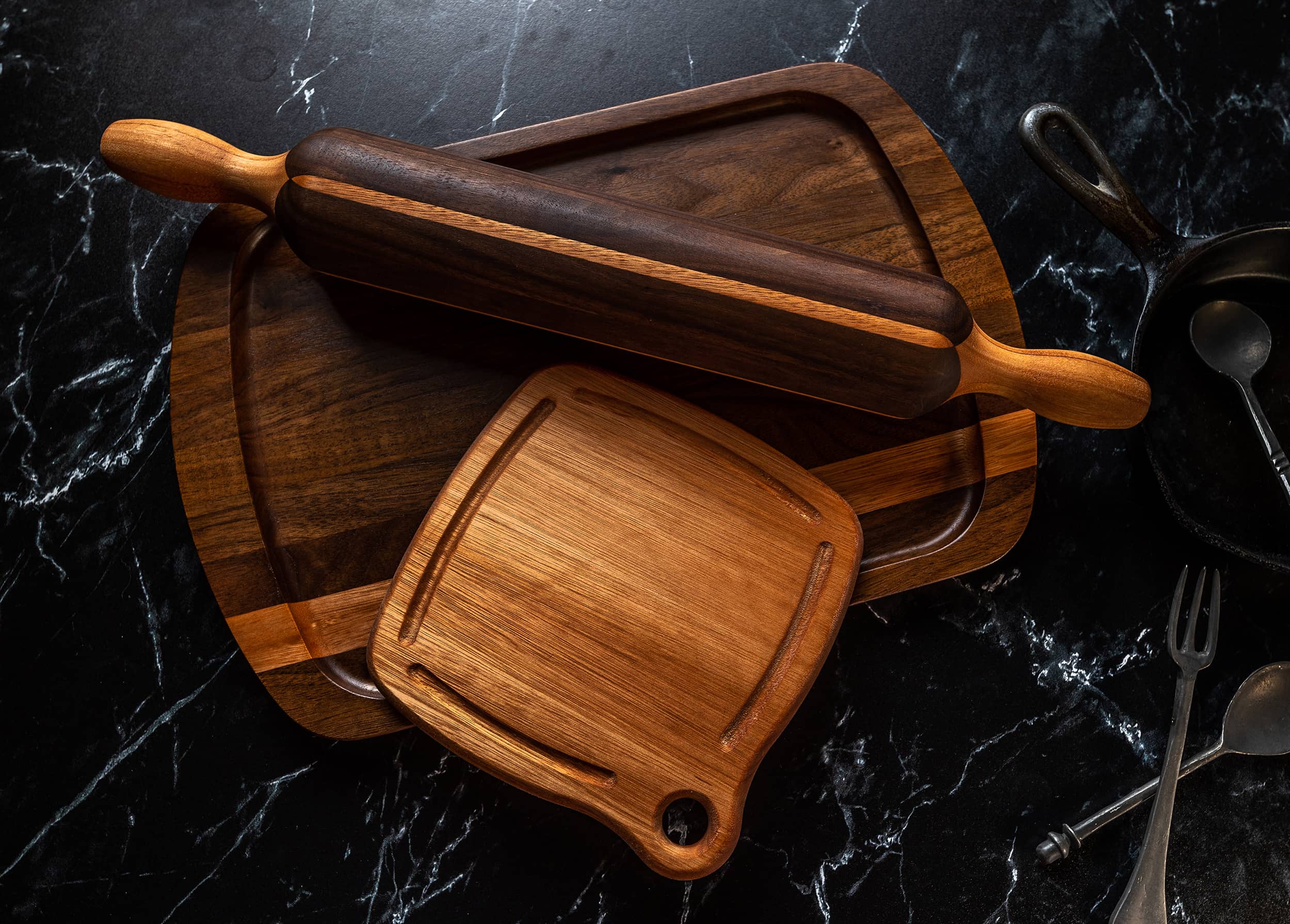Butcher blocks have become a popular choice in today's kitchens, admired for their practical functionality, durability, and timeless beauty. This growing trend highlights the numerous benefits that butcher blocks bring to the kitchen, making them a preferred choice for both professional chefs and home cooks alike. In this article, we'll explore the historical use of butcher blocks, their different types and styles, the benefits they offer, and how to maintain them for long-lasting use.
Historical Use
The use of butcher blocks dates back to the 19th century, when they were primarily used in butcher shops due to their sturdy and durable nature. Traditionally, these blocks were made from hardwoods like maple and oak, which are known for their ability to withstand the constant pounding and chopping of meat. Early butcher blocks were often massive and thick, designed to endure heavy daily use.
Over time, butcher blocks have evolved from purely utilitarian surfaces to stylish and functional elements in kitchen design. While they still retain their practical uses, modern butcher blocks are also valued for their aesthetic qualities, seamlessly blending into various kitchen styles, from rustic farmhouse to sleek contemporary. Today, butcher blocks are available in various sizes, shapes, and wood types, making them versatile enough to fit any kitchen design.
Types and Styles
When selecting a butcher block, it's essential to understand the different types and styles available. This section explores the distinctions between end-grain and edge-grain butcher blocks, the various materials used to make them, and the different design options.
End Grain vs. Edge Grain
When choosing a butcher block, one of the key considerations is whether to opt for an end-grain or edge-grain block. End-grain butcher blocks are constructed by arranging short pieces of wood vertically, exposing the end fibers. This design makes them exceptionally durable and gentle on knife edges, as the wood fibers can absorb the impact of chopping. In contrast, edge-grain butcher blocks are made from long strips of wood laid side by side. While not as resilient as end-grain blocks, they still offer a sturdy and attractive cutting surface. End-grain butcher blocks are often favored by professional chefs for their durability and knife-friendliness, while edge-grain butcher blocks are popular among home cooks for their affordability and ease of maintenance.
Materials
Butcher blocks can be crafted from a variety of butcher block wood types, each offering unique characteristics. Common choices include maple, oak, and walnut. Maple is popular for its hardness and light color, making it a versatile option for many kitchen designs. Oak, with its prominent grain and durability, offers a classic look, while walnut provides a rich, dark finish that adds a touch of elegance. Other woods, such as cherry and teak, are also used to create butcher blocks with distinct colors and grain patterns, allowing you to choose a block that complements your kitchen decor.
Design Options
Traditional Butcher Blocks
Traditional butcher blocks tend to be thick and robust, with a substantial weight and presence that serve as a focal point in the kitchen. These traditional designs provide a rustic or farmhouse look, evoking a sense of timelessness and durability that makes them a favorite in kitchens that prioritize both form and function.
Contemporary Butcher Blocks
For those who prefer a more modern aesthetic, contemporary butcher blocks offer sleek, minimalist designs with clean lines. They often feature lighter woods and simple, elegant designs that enhance the overall look of a modern kitchen without overwhelming it.
Decorative Butcher Blocks
Some butcher blocks are designed with decorative elements, such as unique grain patterns, inlays, or customized engravings. These decorative blocks serve as both functional tools and eye-catching pieces of kitchen art. Customers can personalize their butcher blocks with engravings or choose blocks with intricate designs that reflect their unique style and personality.
Benefits of Butcher Blocks
Butcher blocks make a valuable addition to any kitchen. From their aesthetic appeal and durability to their knife-friendliness and sanitary benefits, they provide a wealth of practical advantages:
Aesthetic Appeal
Butcher blocks add a warm and inviting touch to any kitchen. Their rich textures and colors make them an attractive centerpiece in both traditional and contemporary settings. And the wide variety of wood types and design options allows you to select a butcher block that complements your kitchen's overall aesthetic.
Durability
Butcher blocks are renowned for their longevity and toughness, making them ideal for heavy kitchen use. The robust construction of these blocks ensures they can withstand the rigors of daily chopping and cutting without significant wear and tear. High-quality butcher blocks, particularly those made from hardwoods like maple and oak, can last for decades with proper care.
Knife-Friendliness
One of the standout benefits of butcher blocks is their knife-friendliness. Their natural wood surface helps protect knife edges, reducing wear compared to harder surfaces like stone or glass. This not only prolongs the life of the knives but also ensures a smoother cutting experience. End-grain butcher blocks are particularly known for their ability to keep knives sharp, as the wood fibers separate and close around the knife blade, minimizing damage.
Sanitary Benefits
Wood has natural antimicrobial properties, which can help maintain a hygienic surface when properly cared for. Studies have shown that bacteria do not survive long on wood surfaces, making butcher blocks a healthier option compared to plastic cutting boards, which can harbor bacteria in knife grooves. Regular cleaning and maintenance can further enhance these sanitary benefits, making butcher blocks a safe and practical choice for food preparation.
Butcher Block Maintenance
In order to ensure the functionality and longevity of butcher blocks, proper maintenance is essential. This includes cleaning, oiling and conditioning, and repairing minor damage.
Cleaning Tips
Proper cleaning is essential to maintaining the longevity and hygiene of your butcher block. After each use, wipe the surface with a damp cloth and mild soap. Avoid soaking the block in water, as this can cause the wood to warp or crack. For deeper cleaning, use a mixture of vinegar and water to sanitize the surface, followed by a thorough drying.
Oiling and Conditioning
To keep butcher blocks looking their best and functioning properly, regular butcher block treatment is necessary. Applying a food-safe mineral oil helps to hydrate the wood, preventing it from drying out and cracking. This also enhances the natural beauty of the wood, keeping it vibrant and fresh. Conditioning treatments with beeswax-oil wood conditioner can provide an additional layer of protection and shine.
Repairing Minor Damage
Butcher blocks can acquire scratches and dents over time, but these issues can often be repaired with simple techniques. Sanding the affected area and reapplying oil can restore the surface to its original condition, extending the life of your butcher block. For deeper cuts or gouges, using a wood filler and then sanding can effectively repair the damage. Regular maintenance not only keeps your butcher block looking new but also ensures its continued functionality.
Conclusion
Butcher blocks offer a versatile and durable addition to any kitchen. Their ability to combine functionality with aesthetic appeal makes them a valuable investment for both cooking enthusiasts and professional chefs. By understanding the different types, styles, and maintenance practices, customers can enjoy the benefits of butcher blocks for years to come. Consider incorporating a butcher block into your kitchen to enhance both the beauty and functionality of your cooking space. The timeless appeal and practical benefits of butcher blocks make them a worthy addition to any kitchen, whether you're a seasoned chef or an occasional cook.







Leave a comment